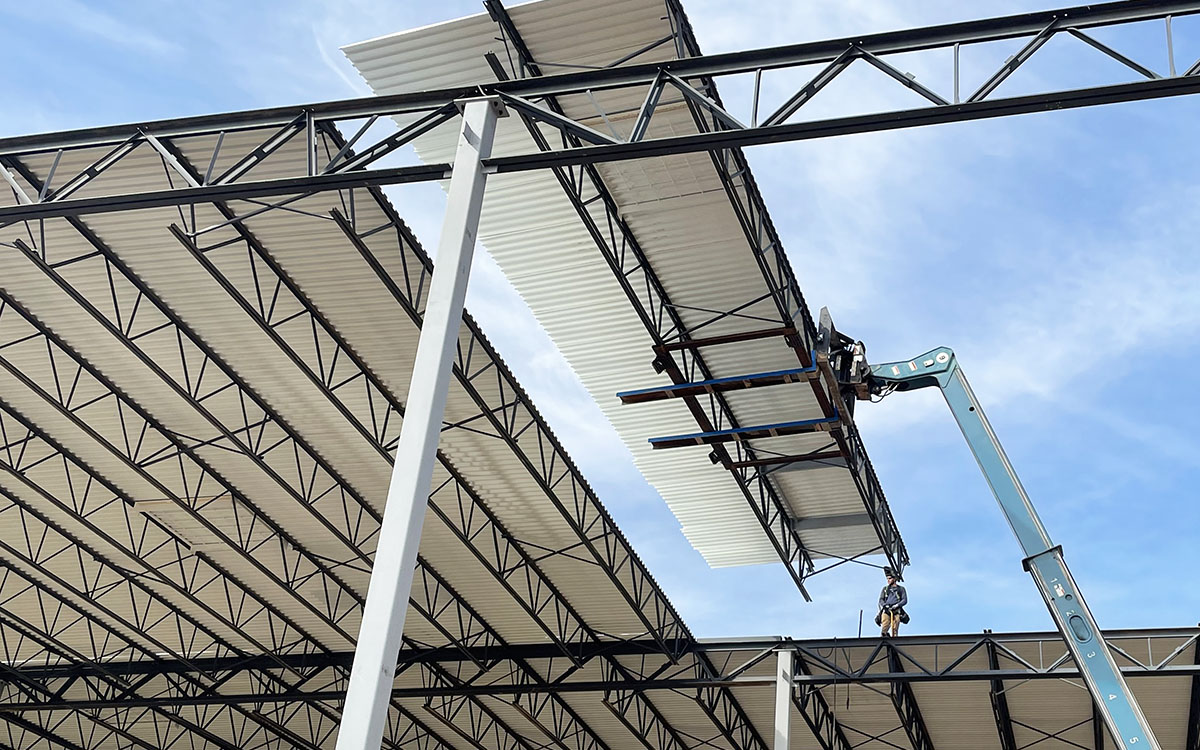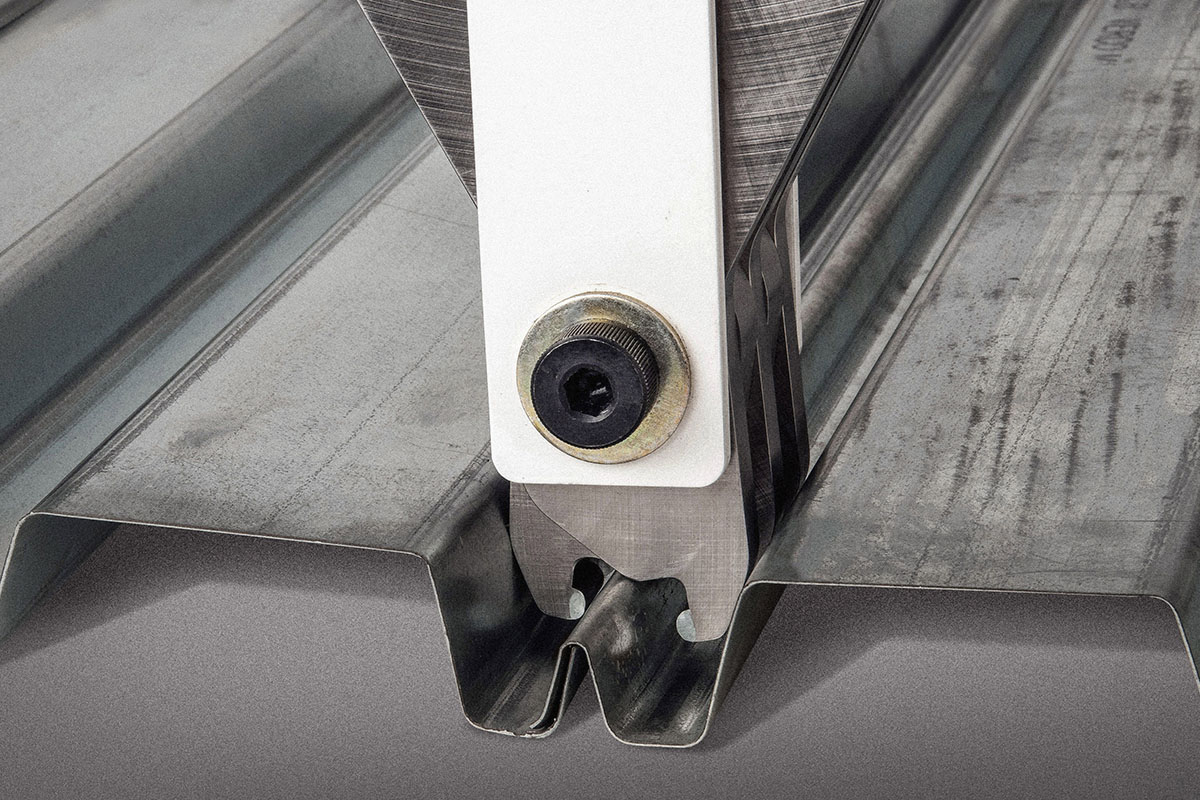UNMATCHED LATERAL FORCE RESISTANCE
Vulcraft’s steel joists and deck systems are engineered to deliver robust, cost-effective solutions for seismic and wind challenges. With products designed to maximize diaphragm shear strength, innovative sidelap connections like PunchLok® II, and the ability to use joists for moment-resisting frames and axial collectors, Vulcraft provides a comprehensive approach to lateral force resistance. These solutions help ensure structural stability and code compliance for buildings in demanding environments.
MAXIMIZE DIAPHRAGM SHEAR PERFORMANCE
STEEL ROOF DECK SYSTEMS
Vulcraft’s steel deck systems deliver excellent lateral diaphragm action, which is crucial for resisting seismic and wind forces. The deck acts as a horizontal diaphragm, distributing lateral loads to the building’s vertical resisting elements. Vulcraft provides comprehensive diaphragm shear tables to assist in specifying the right deck for your project, ensuring code compliance and optimal performance.

AVAILABLE DESIGN TOOLS
Vulcraft’s Design Tools allow you, as the designer, to obtain custom design information for your project, look at scenarios, and allow you to find the highest value solutions for your client.
BARE DECK UNIFORM LOAD
Determine the uniform gravity and wind-uplift loads for your bare deck configurations.
BARE DECK WALL ANCHORAGE
Design bare deck to resist the wall anchorage forces from combined seismic, wind, and gravity loading based on the combined axial and bending strength.
WIND LOADS CALCULATOR FOR ROOF SYSTEMS
Quickly calculate upward and downward wind pressures per C&C or MWFRS.
BARE DECK DIAPHRAGM
Calculate the bare deck diaphragm shear and stiffness for your configuration based on AISI S310 and IAPMO reports.

SUPERIOR SIDELAP CONNECTIONS FOR ENHANCED SHEAR STRENGTH
PUNCHLOK® II SYSTEM
The PunchLok® II system is a high-performance side-lap attachment method for steel decks. It enables faster installation while maintaining or increasing diaphragm shear strength compared to traditional methods. The system is stronger and more effective than screwed side laps or conventional button punches, providing consistent, weld-free connections and simplifying inspection, which is especially valuable in seismic and wind applications.
ENGINEERED FOR MOMENT-RESISTING LATERAL FORCE SYSTEMS
STEEL JOISTS
Vulcraft’s open web steel joists can be engineered for continuous moment design, allowing them to function as part of the building’s lateral force-resisting system. By designing joists to resist moments, the need for additional bracing can be reduced or eliminated, improving structural efficiency and flexibility in layout.

AVAILABLE DESIGN TOOLS
Vulcraft’s Design Tools allow you, as the designer, to obtain custom design information for your project, look at scenarios, and allow you to find the highest value solutions for your client.
JOIST WIZARD
Select the most economic joist depth based on your inputted special loads including uniform and non-uniform distributed, concentrated, axial, and end moments. Outputs include joist self-weight, top chord width, seat depth, and allowable maximum duct size.
SHEAR AND MOMENT COMPARISON
This tool compares the shear and moment diagram for two different loading conditions.
JOIST ANALYSIS AID
Our Joist Analysis Aid will evaluate your joist for combined uniform and concentrated loading, and will suggest where webs will see a stress reversal and a designation and bridging.
WIND LOADS CALCULATOR FOR ROOF SYSTEMS
Quickly calculate upward and downward wind pressures per C&C or MWFRS.

OPTIMIZED AXIAL LOAD TRANSFER
STEEL JOISTS AND GIRDERS
Steel joists and joist girders can be detailed to act as collectors, transferring axial loads across the diaphragm to the lateral force-resisting elements. Vulcraft’s design tools support the analysis and specification of joists for combined loading, including axial forces, ensuring that collector requirements are met for seismic and wind design.